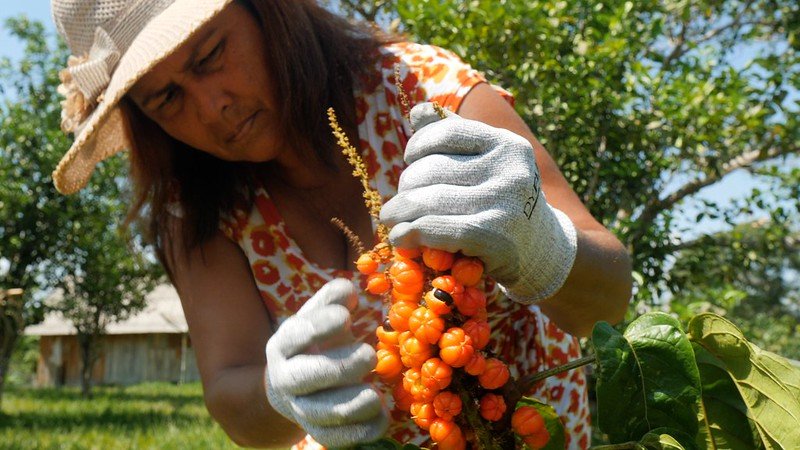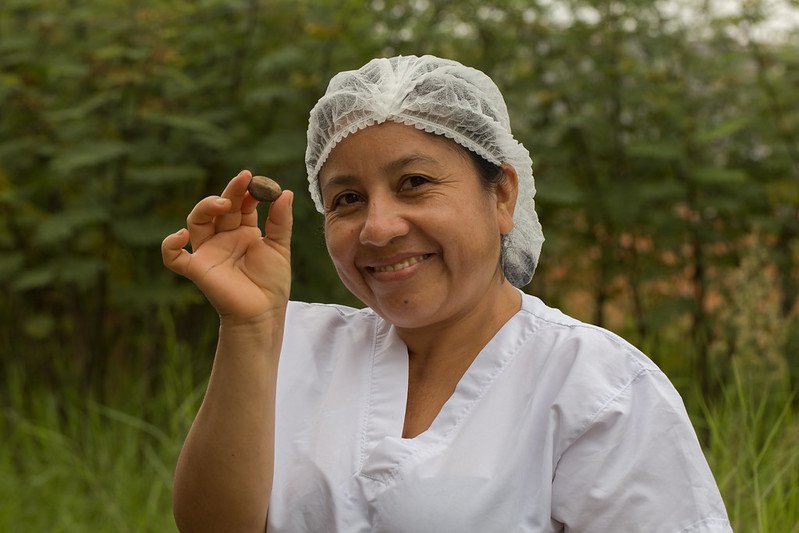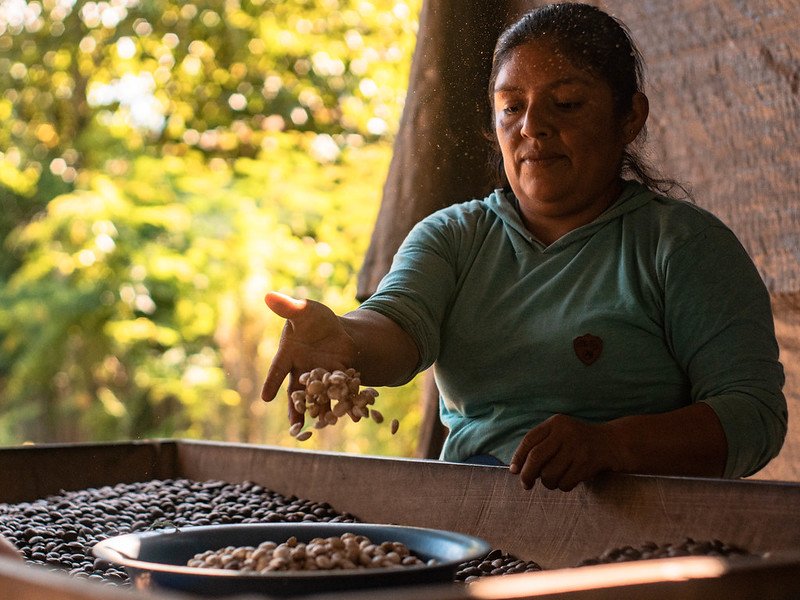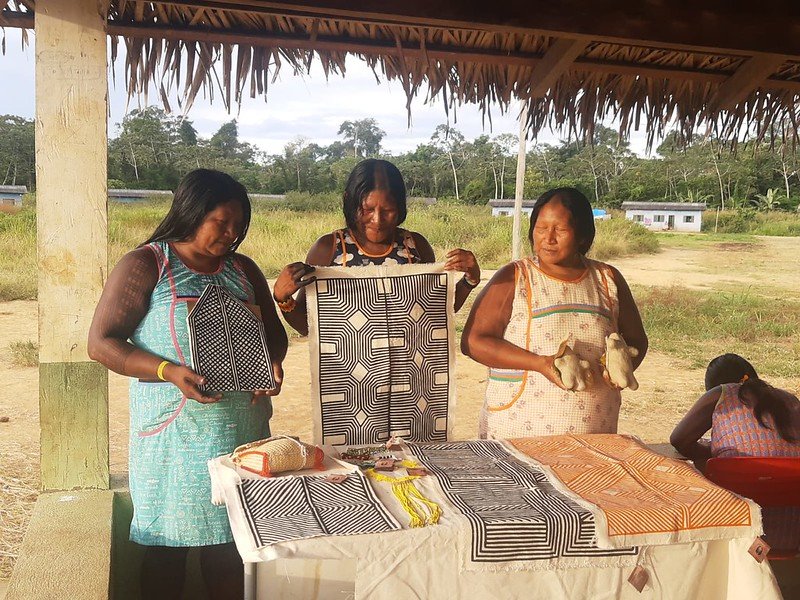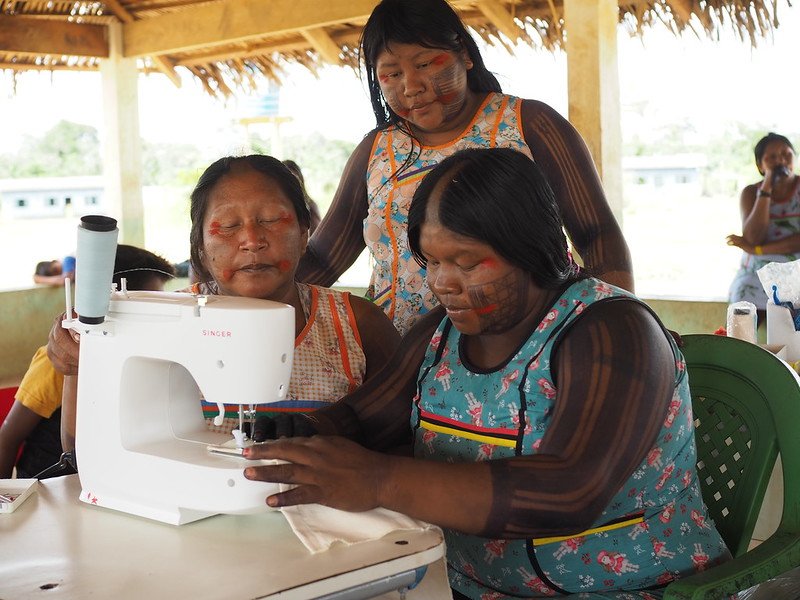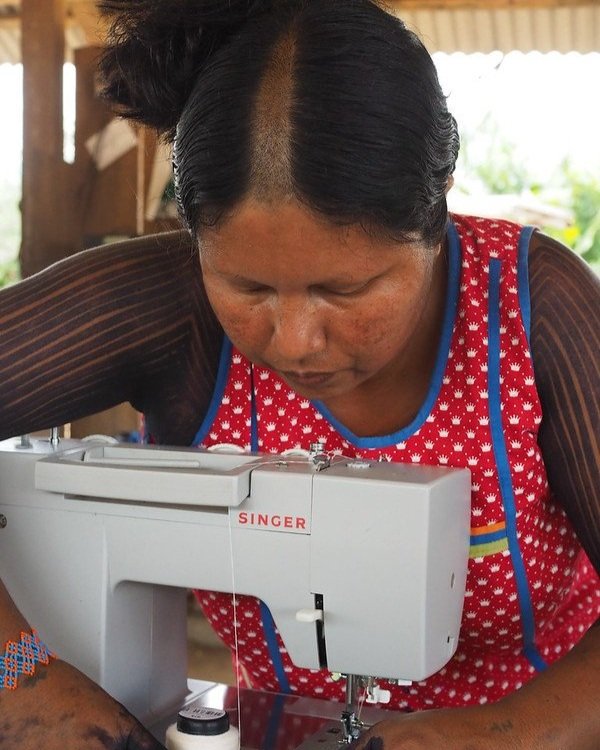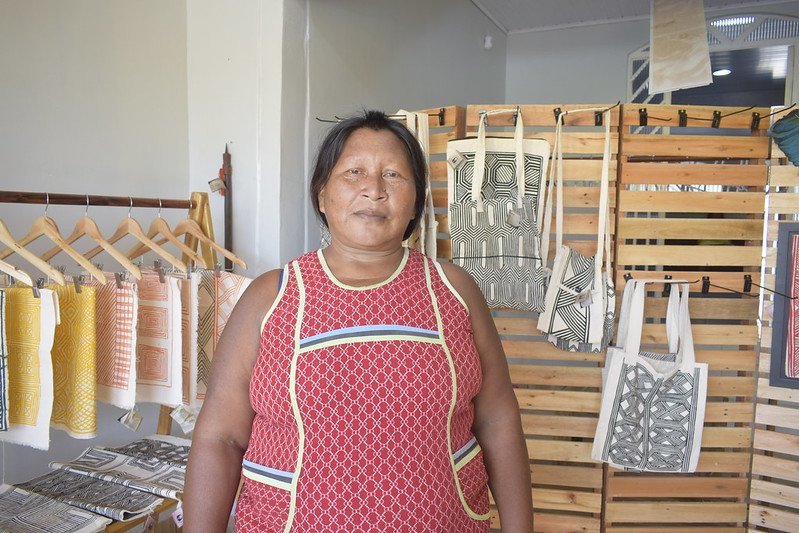NESsT tiene una Portafolio de 50 empresas con sede en la Amazonia. En los últimos cinco años, nuestros gestores de Portafolio han trabajado estrechamente con estas empresas para supervisar, medir y aumentar su impacto.
La metodología de medición y gestión del impacto (IMM) de NESsT se desarrolló sobre la base de más de dos décadas de experiencia en inversión de impacto catalizando pequeñas y medianas empresas en mercados emergentes.
"Al centrarnos únicamente en métricas y resultados cuantitativos, corremos el riesgo de pasar por alto información cualitativa valiosa que podría ayudarnos a tomar mejores decisiones de inversión e impacto. Este riesgo es aún mayor cuando se trabaja en zonas como la cuenca del Amazonas, donde un profundo conocimiento del contexto local es crucial para una medición precisa y fiable del impacto.
"
¿Cómo podemos mejorar los informes de impacto para reflejar mejor las dimensiones cualitativas del impacto?
Herramienta de medición y gestión del impacto de NESsT
NESsT evalúa su impacto a través de su Herramienta de Gestión del Rendimiento ("PMT") desarrollada en 1999 para medir y gestionar el impacto de las empresas sociales y sus cadenas de valor, incluido su rendimiento social y medioambiental.
Tiana Lins (izquierda) y Renata Truzzi (derecha) de NESsT comparten los métodos de gestión y medición del impacto de NESsTen Métricas desde la base" de ANDE 2023 en Río de Janeiro.
El impacto de tener un buen trabajo puede variar enormemente en función del contexto, incluidos el género, la edad, la raza y la ubicación geográfica. Consciente de ello, el equipo NESsT perfecciona activa y periódicamente el PMT para reflejar mejor cómo su Portafolio genera impacto.
En 2016, NESsT se comprometió con la igualdad y la inclusión de género, empezando por sus políticas y procedimientos internos y extendiendo estos principios a las empresas sociales de laPortafolio NESsT . Este proceso tenía como objetivo captar la dinámica de género en toda su Portafolio y cerrar cualquier brecha de género identificada para mejorar la inclusión financiera y social de las comunidades marginadas.
A continuación se presentan ejemplos de indicadores de equidad de género que NESsT sigue como parte de su estrategia de inversión con enfoque de género:
Funciones directivas
Número de hombres y mujeres fundadores/propietarios, miembros del consejo de administración y directivos
Empleados
Número de empleados y empleadas fijos
Número de hombres y mujeres excluidos formados y empleados, incluido el número de nuevos empleados y de los que tienen contrato
Número de hombres y mujeres excluidos colocados en empleos a tiempo parcial, a tiempo completo, temporales o permanentes, y empleos con contrato
Proveedores
Número de proveedores excluidos, hombres y mujeres, incluidos nuevos proveedores, proveedores con contrato y volumen total de compras
Jornaleros
Número de hombres y mujeres excluidos jornaleros y con contrato
Ingresos pagados a hombres y mujeres
Salario medio mensual pagado a los empleados excluidos y no excluidos, hombres y mujeres, en puestos directivos y técnicos, a los hombres excluidos y mujeres excluidas colocados por la organización, a los proveedores excluidos y mujeres excluidas, y a los jornaleros excluidos y mujeres excluidas.
Aunque el actual proceso de IMM de NESsT proporcionaba información detallada, NESsT trató de desarrollar métodos más detallados para comprender la cultura y el contexto de los datos que recopila, específicamente para las empresas de la Amazonia.
Desarrollar un enfoque más contextualizado de la GIM dando prioridad a las voces de las comunidades locales.
"Uno de los temas más urgentes que estamos abordando en NESsT es cómo apoyar a las empresas de bioeconomía y a las partes interesadas de la industria para que tomen mejores decisiones en torno a su impacto medioambiental y de género, centrando las voces de los beneficiarios y captando los resultados del mundo real."
Tiana Lins, Directora de NESsT Brasil
En 2022, NESsT unió sus fuerzas con el IDRC y la Fundación Mott para estudiar la interseccionalidad de género, medio ambiente y acceso a recursos financieros en la bioeconomía amazónica. Las dos asociaciones de investigación separadas tenían como objetivo explorar cómo las prácticas de las empresas de bioeconomía en áreas como la agricultura regenerativa y la equidad de género pueden abordar el cambio climático y mejorar la inclusión financiera de los pueblos indígenas, los quilombolas y las comunidades ribereñas y locales, especialmente las mujeres.
En concreto, NESsT se unió al consorcio Negocios Agroalimentarios Regenerativos (NAR). Apoyada por el IDRC, la iniciativa se dedica a profundizar en la comprensión del valor de las inversiones en negocios agroalimentarios regenerativos a través de una lente de género. Gracias a la estrecha colaboración con las 10 organizaciones que forman parte del consorcio, NESsT pudo mejorar sus indicadores cuantitativos y cualitativos para reflejar mejor las realidades de las comunidades locales de la Amazonia. Esta asociación permitió a NESsT llevar a cabo una investigación sobre el terreno complementada con una escucha profunda, desarrollar y aplicar planes de formación en materia de género y ofrecer tutorías personalizadas sobre género.
Foto: Reunión en NESsT Portafolio empresa Cooaprime
El equipo de NESsT complementó la investigación documental sobre la geografía, la población y las cadenas de suministro de estas empresas con visitas a 11 empresas de la cuenca del Amazonas. Durante estas visitas, los gestoresPortafolio NESsT escucharon activamente a los empresarios y empleados, así como a las comunidades a las que apoyaban a través de conversaciones 1-1. Los entrevistados compartieron reflexiones y debatieron sobre lo que significaban para ellos las conclusiones iniciales sobre el impacto y la metodología de NESsT.
A continuación, NESsT elaboró planes de acción con cada empresa indígena para desarrollar estrategias de inclusión de género y agricultura regenerativa que cada empresa pudiera aplicar. A partir de lo aprendido en estas dos asociaciones y en otras, NESsT perfeccionó sus indicadores verdes.
Ahora, además de hacer un seguimiento de las cadenas de valor y la participación de las comunidades indígenas, NESsT también hace un seguimiento:
Número de hectáreas de zonas protegidas gestionadas adecuadamente (parques, reservas, zonas protegidas privadas)
Número de hectáreas de tierra restauradas (es decir, deforestadas/degradadas)
Número de hectáreas de paisajes con prácticas sostenibles (es decir, certificación ecológica, policultivo, agrosilvicultura)
Toneladas de residuos no biodegradables evitados
Toneladas de combustibles fósiles evitadas
Toneladas de emisiones de CO2 evitadas
Estudio de caso NESsT : entrevista a la Associação Bebô Xirin do Bacajá (ABEX)
ABEX es una asociación dirigida por indígenas creada en 2003 con la misión de defender los intereses del pueblo xikrin en su territorio oficialmente reconocido: la Tierra Indígena Trincheira Bacajá (TITB), en la Amazonia brasileña.
ABEX, que trabaja para garantizar la calidad de vida y el bienestar de más de 60 familias de Xikrin, ayuda a sus miembros a utilizar métodos sostenibles para recolectar productos forestales no madereros, como las nueces del Amazonas, pagándoles precios justos por sus productos. Cerca del 70% de las personas a las que ayuda ABEX son mujeres.
Apoyo a la capacitación social, económica y de género de las mujeres xikrin de Bacajá
Como depositarias de los conocimientos ancestrales del pueblo xikrin, las mujeres xikrin, conocidas como menhires, desempeñan un papel decisivo en el mantenimiento de la cultura mebengôkre. Además de transmitir estos conocimientos a sus hijos y nietos, desempeñan un papel intrínseco en el cultivo de alimentos, el mantenimiento de sus hogares y el cuidado de los niños y de la comunidad en su conjunto.
A pesar de ello, la participación de los menhires en todas sus comunidades locales fue limitada, y al principio sólo participaban en las actividades de ABEX a nivel de producción. En la cadena de valor de la nuez amazónica, por ejemplo, ellas partían, lavaban y secaban las nueces recogidas por los hombres, que gestionaban las negociaciones y las ventas.
Durante la pandemia, ABEX recibió una pequeña subvención para fabricar máscaras protectoras contra el COVID-19, lo que abrió una nueva línea de negocio para la asociación. Muchas mujeres empezaron a interesarse por la perspectiva de crear artesanías que pudieran decorar utilizando la práctica ancestral mebengôkre de la pintura impresa.
Una iniciativa que comenzó con ocho mujeres en la aldea xikrin de Prindjãm pronto se extendió a otras aldeas, con cada vez más mujeres reunidas para coser, pintar y vender sus productos a ABEX.
En 2021, ABEX se unió al proyecto Derechos y Recursos Indígenas Amazónicos (AIRR), ejecutado en colaboración con NESsT, el Fondo Mundial para la NaturalezaWWF), organizaciones indígenas y la Coordinadora de las Organizaciones Indígenas de la Cuenca Amazónica (COICA), con el apoyo de la Agencia de los Estados Unidos para el Desarrollo InternacionalUSAID). Junto con nuestros gestores Portafolio , las artesanas de Xikrin identificaron formas de mejorar la cadena de producción artesanal. Se compraron máquinas de coser con fondos del proyecto y se formó a las mujeres de Xikrin para que abandonaran el trabajo manual.
Al mejorar sus procesos y confeccionar prendas de mayor calidad que satisfacían las demandas de las grandes empresas, las mujeres empezaron a fabricar productos más complejos y a venderlos por todo el país.
La línea de negocio de artesanía se expandió rápidamente, y los ingresos por ventas casi igualaron a los de la línea de frutos secos de Amazon.
Gracias a sus esfuerzos por fortalecer la cadena artesanal en las aldeas de Xikrin, las menhires empezaron a trabajar de forma independiente con menos mediación de los hombres. En la actualidad, más de 200 mujeres xikrin de 22 aldeas del territorio fabrican lienzos pintados a mano, bolsos, vestidos, collares, pulseras y pendientes de cuentas, que venden directamente a empresas del mercado nacional a precios justos.
Sin embargo, a pesar de la rápida expansión de la línea de negocio, durante las visitas in situ de NESsT, las mujeres xikrin manifestaron que seguían sin tener voz en los procesos de toma de decisiones de la asociación.
Como parte de un plan de acción co-creado al unirse al Portafolio de Aceleración NESsT , ABEX se comprometió a incluir a las mujeres Xikrin en su estructura organizativa. En estrecha colaboración con los gestores de NESsT Portafolio , en marzo de 2023 se creó un Comité de Mujeres. Además, se eligió a dos mujeres para ocupar el cargo de vicetesorera y formar parte del consejo fiscal de la asociación.
"Las mujeres somos más felices desde que empezamos a trabajar con ABEX. Tenemos más independencia económica y ya no dependemos de nuestros maridos. Nuestra calidad de vida seguirá mejorando, sobre todo cuando todo el mundo reciba formación y se le enseñe a coser, lo que nos permitirá aumentar la producción en todas las aldeas. A continuación, me gustaría que las mujeres de Xikrin recibieran formación en buenas prácticas centradas en competencias de costura y gestión financiera."
En la actualidad, NESsT está poniendo a prueba este enfoque de colaboración con IMM y tiene previsto ampliarlo a otras empresas de su Portafolio la Amazonia.
NESsT tiene previsto incorporar indicadores globales relacionados con el género y el medio ambiente que puedan aplicarse a toda su Portafolio de empresas sociales y medioambientales, como en el caso de ABEX. Además, complementaremos estas cifras con relatos sobre el terreno que capten la diversidad cultural, histórica y social de cada comunidad y sus habitantes.
Puede mantenerse al día de nuestros avances en el campo de la medición y gestión del impacto suscribiéndose al boletín de NESsT y siguiendo a NESsT en LinkedIn y Instagram.
Puede leer más sobre la historia de la Asociación Bebo Xikrin do Bacajá (ABEX) aquí en inglés y español.
